Bhutan Travels
Bhutan travel is a unique, regulated experience centered on sustainability and cultural preservation. Operating under a "High Value, Low Impact" policy, visitors pay a daily tariff (typically $200–$250) covering accommodation, meals, transport, guides, and a sustainable development fee. This model limits mass tourism while funding education, healthcare, and environmental conservation. Trips emphasize immersive cultural encounters—visiting ancient dzongs (fortress monasteries), attending vibrant festivals like Paro Tshechu, trekking through pristine Himalayan landscapes, and learning about Gross National Happiness (GNH), Bhutan’s holistic development philosophy. Travelers explore monasteries, hike to cliffside temples (e.g., Tiger’s Nest), and engage with local traditions, all under mandatory guided tours ensuring respectful interaction.
Why Photograph matter
Photographs are vital in Bhutan for preserving fleeting, profound moments. The kingdom’s majestic monasteries, prayer-flag-strewn valleys, and vibrant cultural spectacles exist in a rapidly modernizing world—capturing them honors their transient beauty and shares Bhutan’s ethos globally. For travelers, photos crystallize personal journeys: a monk’s serene smile, the golden hour glow on Punakha Dzong, or a masked dance at a festival. Bhutan Photography Tours visuals become tangible memories of a land prioritizing spiritual wealth over materialism. Ethically taken photos (with permissions where required) also spread awareness of Bhutan’s conservation successes—like its 70% forest cover and carbon-negative status—inspiring others to value cultural and ecological heritage. In essence, pictures bridge the gap between Bhutan’s guarded authenticity and the world’s curiosity.
Bhutan Capital Thimphu Areas pictures
Thimphu, Bhutan's capital, captivates with its unique blend of serene tradition and gentle modernity. Its beauty lies in striking contrasts: ancient dzongs like majestic Tashichho Dzong glow golden against forested slopes, while the giant Buddha Dordenma statue radiates peace over the city. Traditional wooden architecture, adorned with intricate paintings, lines streets free of traffic lights, replaced by graceful white-gloved police. The air hums with spirituality at the Memorial Chorten, where locals spin prayer wheels, and the scent of incense drifts from monasteries. Bustling markets explode with dizzying colors of handwoven textiles and fresh produce, while the pristine Wang Chhu river winds through the valley. Thimphu’s charm is its harmonious coexistence of vibrant culture, spiritual depth, and breathtaking natural scenery—all wrapped in an atmosphere of calm and mindful living.
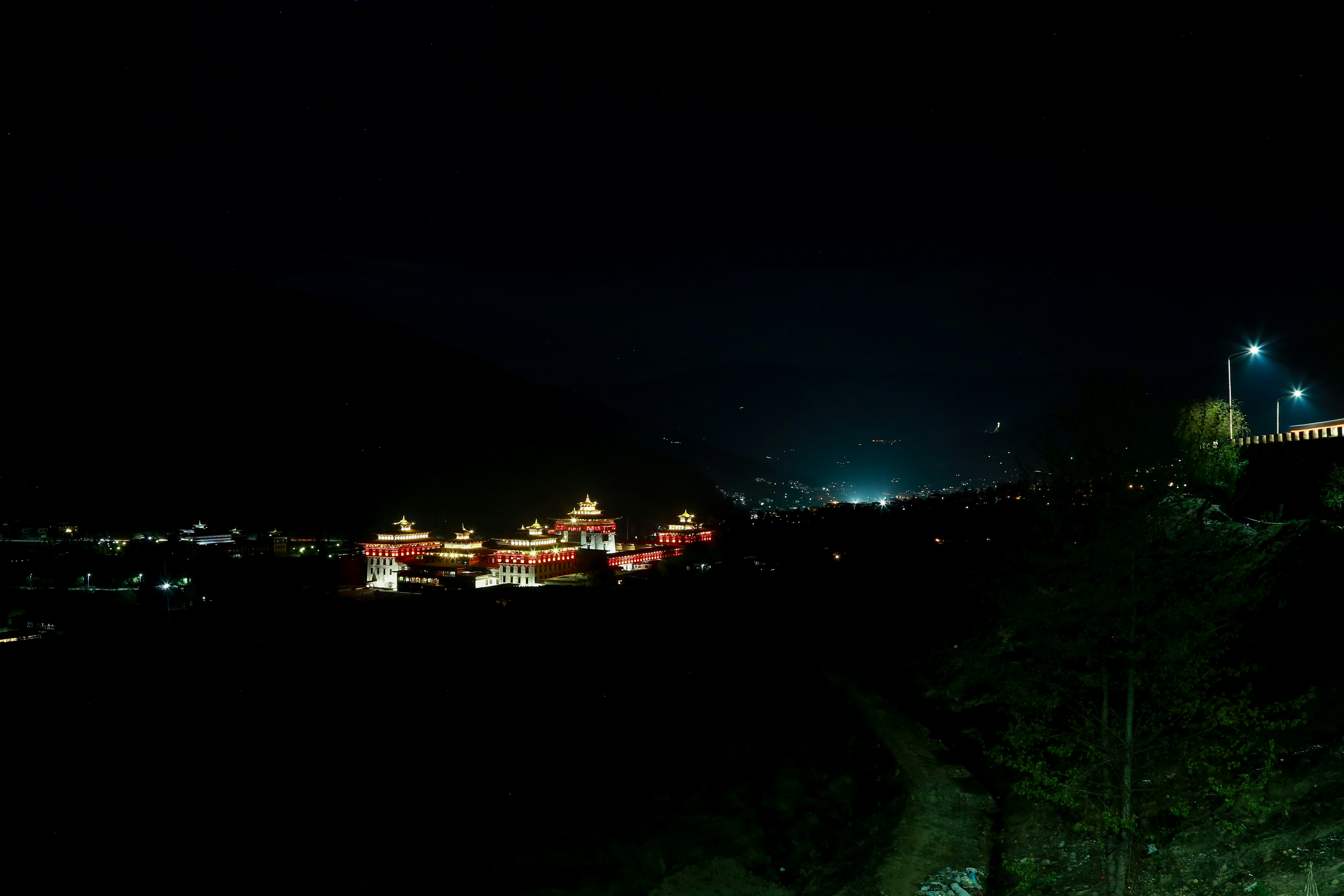
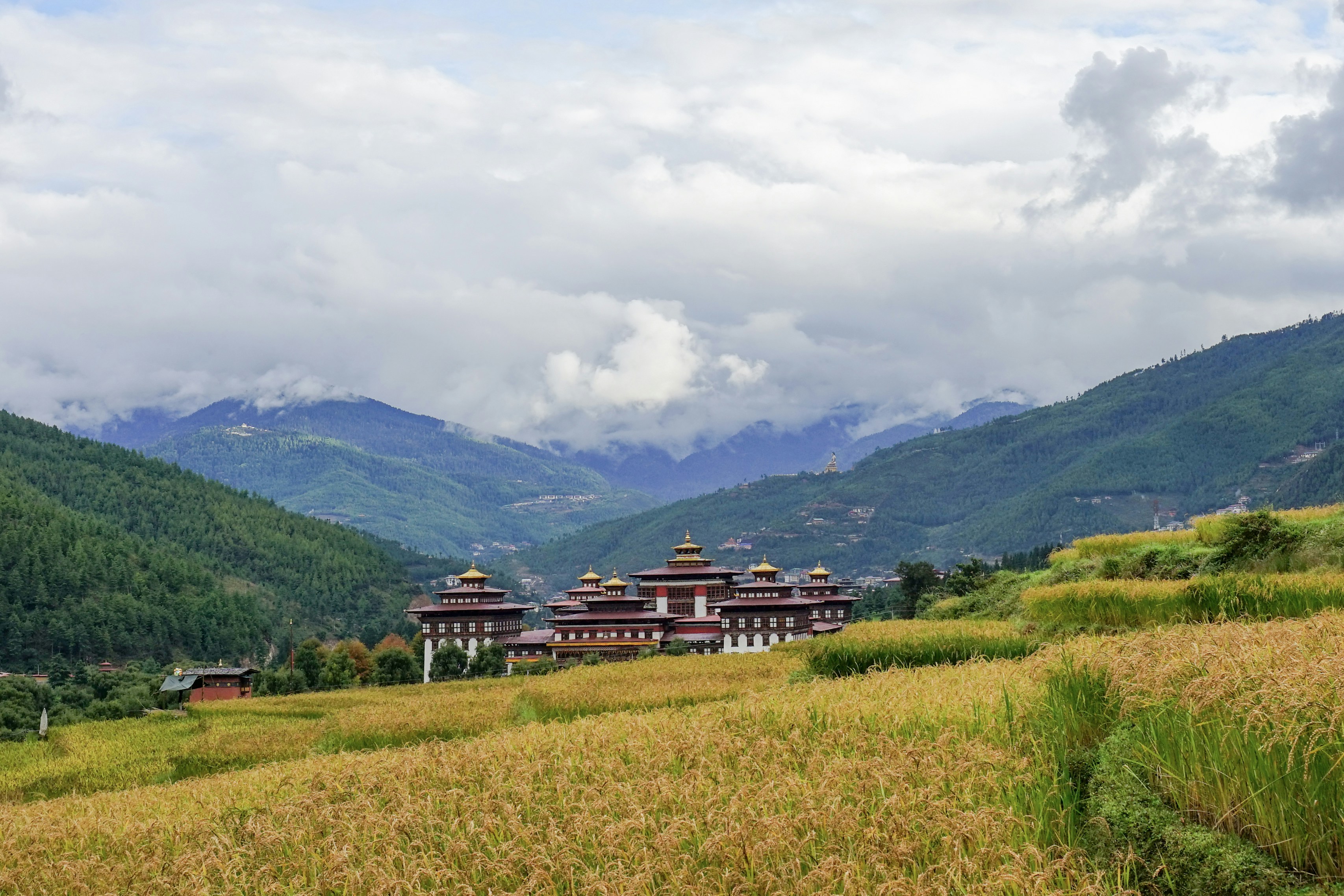
Beautiful paro city pictures
Paro (2,200m) radiates timeless charm as Bhutan's historic gateway. Its beauty unfolds in layers: the sacred Taktsang Palphug (Tiger’s Nest) Monastery, clinging impossibly to a sheer cliff face, shrouded in mists or glowing golden at sunrise—an iconic spiritual beacon. Below, the Paro Chu River rushes through terraced rice fields, creating an emerald patchwork quilt dotted with traditional farmhouses of rammed earth and wood. Prayer flags flutter energetically, slicing the cobalt sky above ancient shrines like Kyichu Lhakhang, one of Bhutan’s oldest temples. The town center retains an unhurried, low-rise charm, with whitewashed buildings adorned in intricate Buddhist motifs. Crisp mountain air carries the scent of pine and woodsmoke. As planes dramatically descend through the valley into one of the world’s most thrilling airports, Paro reveals itself—a harmonious blend of profound spirituality, unspoiled nature, and living heritage, where every vista feels like a serene painting brought to life.
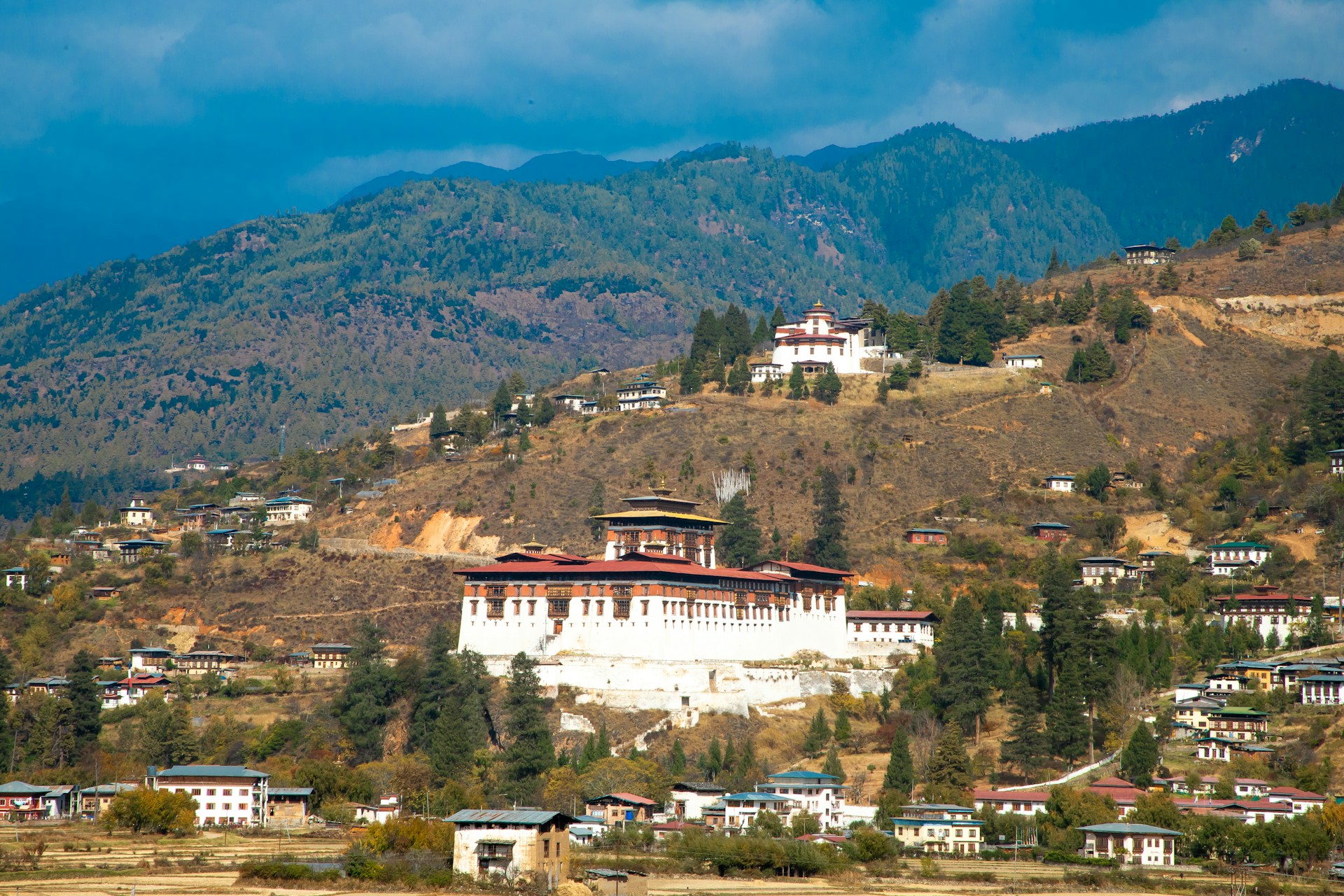
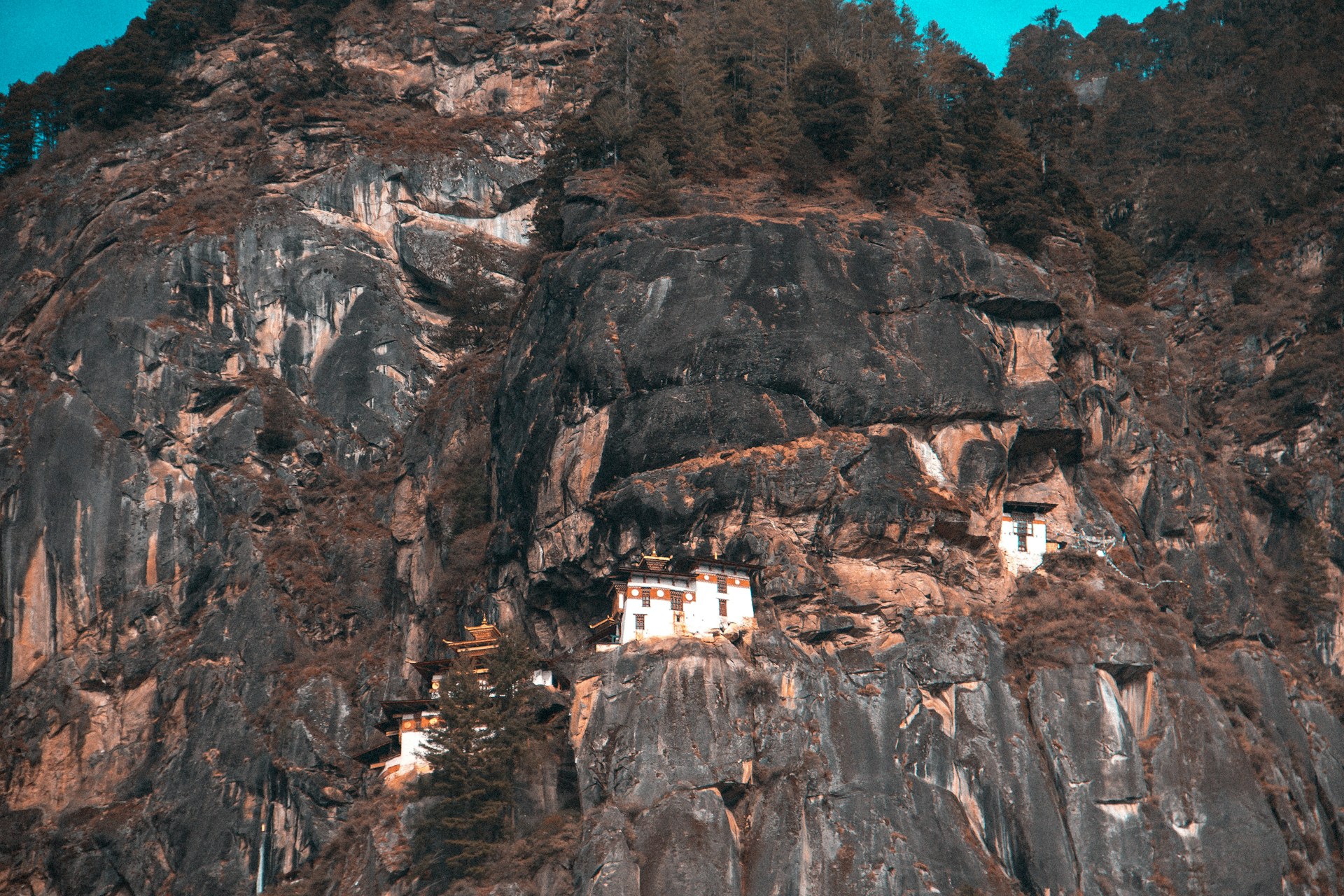
Punakha city pictures
Pho Chhu (Father River) and Mo Chhu (Mother River) converge in a sacred marriage, Punakha unveils a lush, almost tropical beauty distinct from Bhutan's highlands. Dominating this serene valley is the majestic Punakha Dzong, arguably Bhutan's most stunning fortress-monastery. Its towering whitewashed walls, intricate golden spires, and layered courtyards glow with ethereal grace, dramatically reflected in the jade-green waters below, especially breathtaking at sunrise or when framed by spring's violet jacaranda blossoms. A thrilling, traditional suspension bridge draped in vibrant prayer flags leads to the dzong, swaying playfully over the rushing river. Punakha's charm extends beyond the dzong: fertile terraced fields ripple across the valley floor in brilliant greens and golds, dotted with traditional farmhouses. The iconic Chimi Lhakhang, the fertility temple adorned with whimsical phallic paintings, sits amidst peaceful rice paddies, radiating quirky spirituality. Gentle hikes through orange groves or up to the hilltop Khamsum Yulley Namgyal Chorten offer panoramic vistas of the valley, river confluence, and distant misty peaks. Punakha’s beauty is a potent blend of profound spirituality, vital agricultural life, dramatic river landscapes, and the warm, fertile embrace of its unique microclimate – a serene, living watercolor painting infused with history and sacred energy.
.jpg)
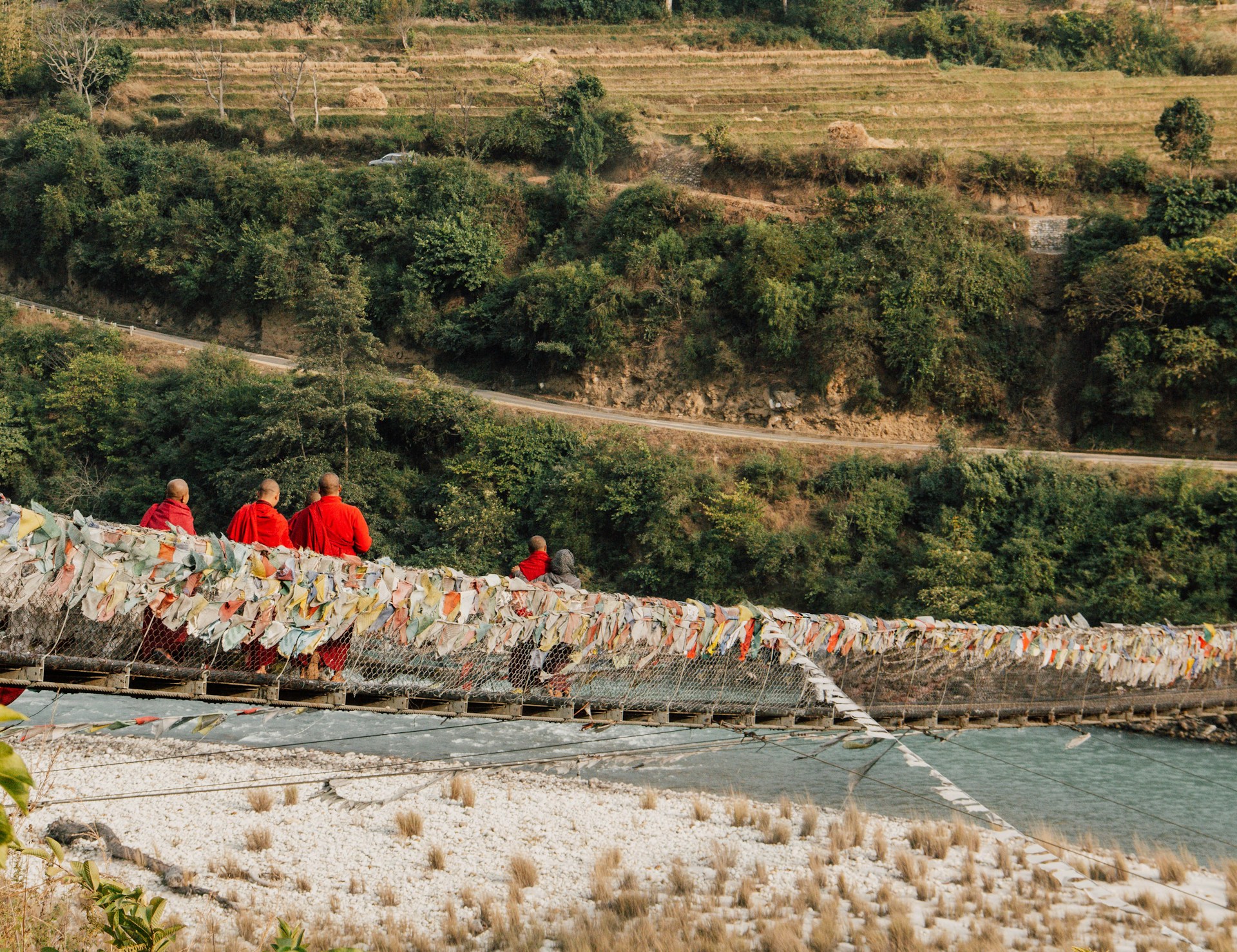
Overall all pictures of Bhutan and its beauties
Overall Bhutan is a very colorful country in context of Photography. Bhutan tours are unique: a "High Value, Low Impact" model funds sustainability & protects culture. Your daily fee ensures carbon-negative, uncrowded exploration. Mandatory guides unlock deep immersion in living Buddhist heritage, pristine sacred landscapes, and the profound philosophy of Gross National Happiness (GNH). It's a soulful, transformative journey, not just a trip.
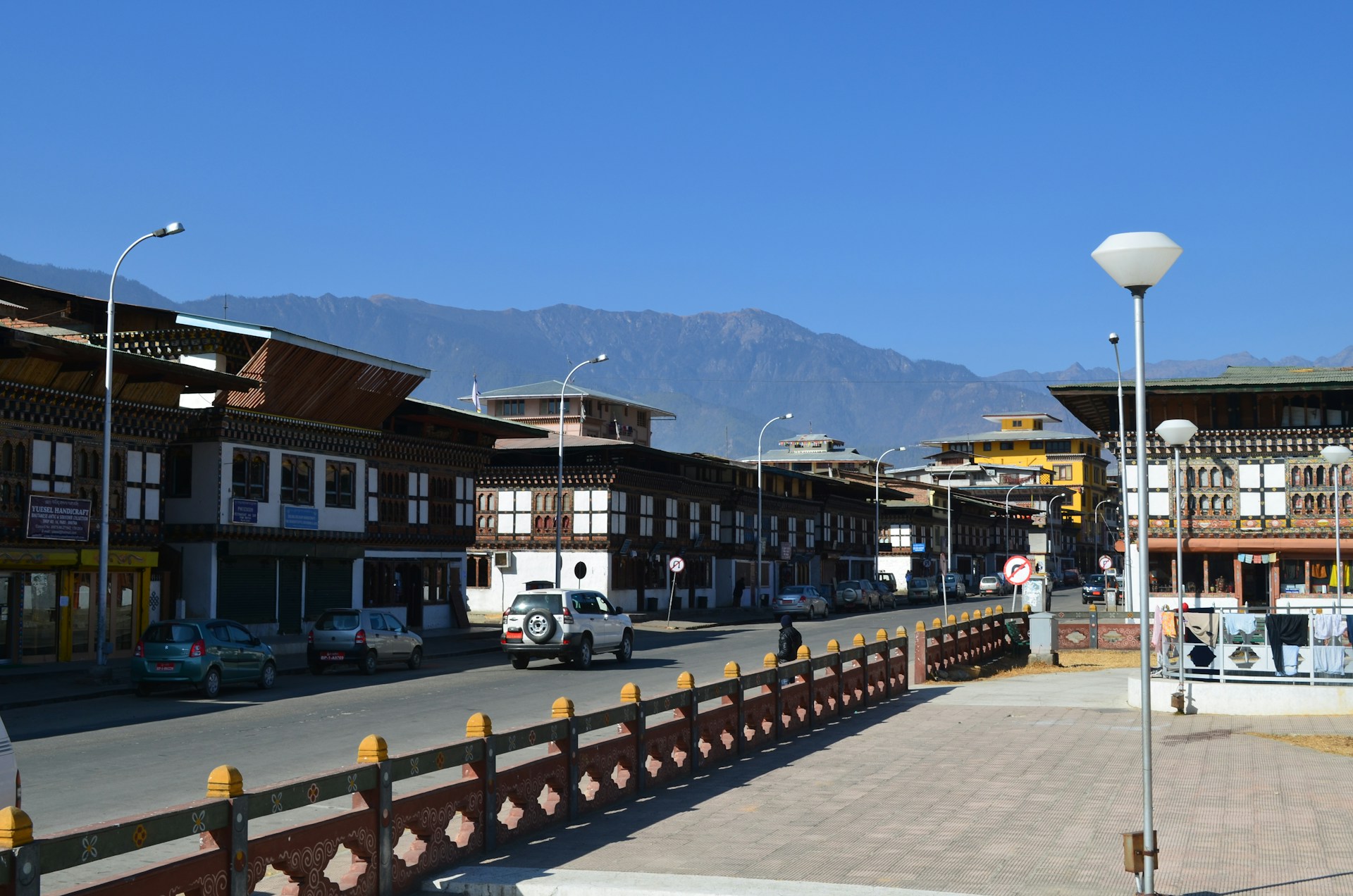

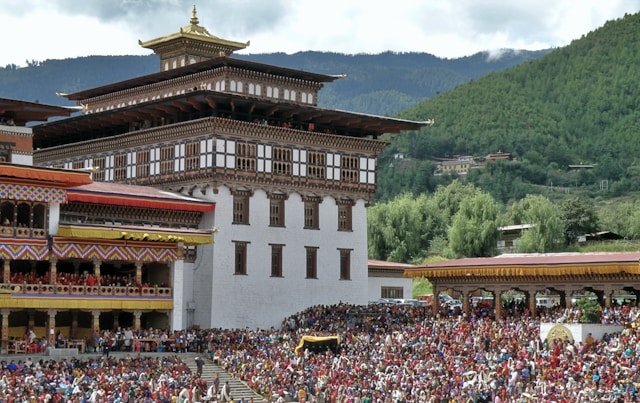
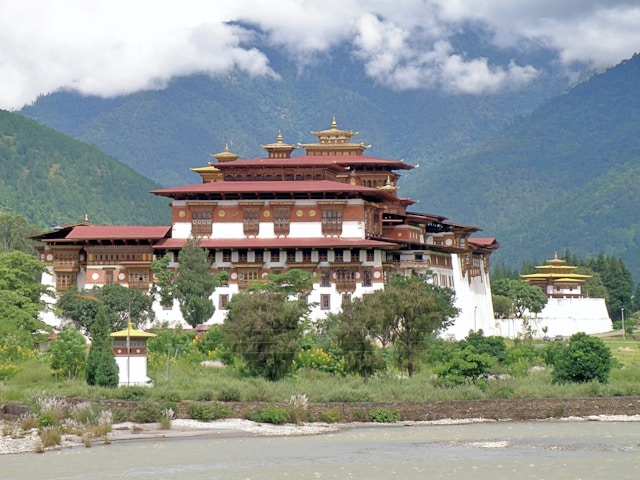
Ten FAQs for photography-focused travel in Bhutan
1. Q: What's the best time of year for photography in Bhutan?
A: Spring (March-May): Rhododendrons bloom, clear skies, pleasant temps. Autumn (Sept-Nov): Ideal! Crisp air, golden light, vibrant festivals (Tshechus), harvest colors. Avoid monsoon (June-August) for heavy rain/clouds.
2. Q: Are there restrictions on photography in Bhutan?
A: Yes, significant ones:
-
Dzongs & Monasteries: NO photography inside most temples, shrines, or inner courtyards. Exterior shots are usually allowed. Always ask your guide first.
-
Religious Artifacts/Ceremonies: Strictly prohibited without explicit permission. Be extremely discreet.
-
People: Always ask permission before photographing locals, especially monks, nuns, or people in traditional dress. Respect a "no."
3. Q: Do I need a special permit or permission for professional photography?
A: Yes, potentially:
-
General Tourists: Standard visa covers casual photography.
-
Professional/Commercial Shoot: Requires special permits from the Department of Information and Media/Department of Culture, involving fees & detailed plans. Discuss with your tour operator well in advance.
4. Q: What photography gear is essential, and are there restrictions?
A: Essentials:
-
Wide-angle (16-35mm): Landscapes, dzong architecture.
-
Telephoto (70-200mm+): Compress mountain vistas, capture candid festival moments discreetly.
-
Sturdy Tripod: Crucial for dawn/dusk, interiors (where allowed), long exposures.
-
Lens Hoods & Filters (CPL, ND): Manage harsh light, reflections, enhance skies.
-
Plenty of Batteries & Memory Cards: Limited charging chances on treks.
-
Rain Cover: Sudden showers are common.
-
Restrictions: Drones are ILLEGAL without extremely hard-to-get permits. Don't bring one expecting to fly it.
5. Q: How does the mandatory tour guide system affect photographers?
A: Your guide is crucial:
-
Access & Permissions: They know where/when photography is allowed and can ask permission on your behalf.
-
Logistics: Plan shoots around travel itinerary; flexibility depends on guide/operator. Communicate your photo goals upfront.
-
Cultural Bridge: Ensures you respect local customs while shooting.
6. Q: What are the top photography locations in Bhutan?
A: Highlights:
-
Paro Valley: Tiger's Nest Monastery (exterior), dzong, traditional houses.
-
Punakha: Majestic Punakha Dzong (exterior), Pho Chu/Mo Chu rivers, suspension bridge.
-
Bumthang: Serene valleys, ancient temples (exteriors), rural life.
-
Phobjikha Valley: Stunning glacial valley, black-necked cranes (winter), farmlands.
-
Haa Valley: Remote, pristine landscapes, traditional villages.
-
Thimphu: Weekend market, Tashichho Dzong (exterior), Buddha Dordenma statue.
-
Festivals (Tshechus): Unparalleled color, mask dances, cultural immersion (requires timing).
7. Q: How important is attending a festival (Tshechu) for photography?
A: Extremely valuable, but challenging:
-
Pros: Unique access to vibrant costumes, masked dances, huge crowds in traditional dress, profound cultural moments.
-
Cons: Very crowded; strict rules on where to stand/shoot; no flash; requires patience & respect. Book well in advance. Your guide is essential here.
8. Q: What are the challenges of photographing in Bhutan?
A: Key challenges:
-
Light: Harsh midday sun in valleys; deep shadows in forests/dzongs. Shoot early/late.
-
Weather: Rapid changes, mist/fog (especially mornings), rain. Be prepared.
-
Altitude: Affects stamina; carry gear carefully.
-
Access Restrictions: Cannot wander freely; must stay with guide/group.
-
Cultural Sensitivity: Constant need for awareness and permission.
-
Power: Reliable in towns, limited off-grid. Charge nightly.
9. Q: Can I photograph local people and villages?
A: Yes, but with STRICT etiquette:
-
Always Ask Permission: Use your guide as an interpreter. A smile and gesture go a long way.
-
Respect a "No": Absolutely do not insist.
-
Be Discreet: Use longer lenses for candid shots without intrusion.
-
Offer Respect/Gratitude: A small contribution (ask guide) might be appropriate if photographing someone extensively.
10. Q: Any specific tips for photographing Tiger's Nest (Taktsang)?
A: Absolutely:
-
Best Light: Early morning (opens at 8 AM). Hike starts pre-dawn. Afternoon sun hits the front.
-
Tripod: Essential for sharp shots in dawn light.
-
Lenses: Wide-angle for context/landscape; telephoto to compress the view & isolate details.
-
Viewpoints: Key shots are from the main viewpoint (cafeteria) halfway up & the final approach. NO photography inside.
-
Hike: Demanding; pack light (essential gear only), water, snacks. Allow ample time.
-
Weather: Check forecast; clouds can add drama or ruin visibility.
If you are looking for tour packages in Bhutan please click here
If you need any further information, please contact us, Email: at [email protected] , Phone (Whatsapp or Viber) +975-1755-6636

-0.jpg)